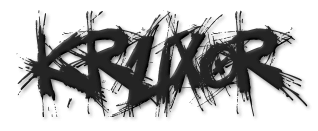right
Quick Summary for right
right CSS property participates in specifying the horizontal position of a positioned element. It has no effect on non-positioned elements.
Code Usage for right
/* <length> values */ right: 3px; right: 2.4em; /* <percentage>s of the width of the containing block */ right: 10%; /* Keyword value */ right: auto; /* Global values */ right: inherit; right: initial; right: revert; right: unset; More Details for right
right
The right CSS property participates in specifying the horizontal position of a positioned element. It has no effect on non-positioned elements.
Syntax
/* <length> values */ right: 3px; right: 2.4em; /* <percentage>s of the width of the containing block */ right: 10%; /* Keyword value */ right: auto; /* Global values */ right: inherit; right: initial; right: revert; right: unset; Values
<length> A negative, null, or positive <length> that represents:
<percentage> A <percentage> of the containing block's width.
auto Specifies that:
for absolutely positioned elements, the position of the element is based on theleft property, while width: auto is treated as a width based on the content; or if left is also auto, the element is positioned where it should horizontally be positioned if it were a static element. for relatively positioned elements, the distance of the element from its normal position is based on the left property; or if left is also auto, the element is not moved horizontally at all. inherit Specifies that the value is the same as the computed value from its parent element (which might not be its containing block). This computed value is then handled as if it were a <length>, <percentage>, or the auto keyword.
Description
The effect of right depends on how the element is positioned (i.e., the value of the position property):
position is set to absolute or fixed, the right property specifies the distance between the element's right edge and the right edge of its containing block. When position is set to relative, the right property specifies the distance the element's right edge is moved to the left from its normal position. When position is set to sticky, the right property is used to compute the sticky-constraint rectangle. When position is set to static, the right property has no effect. When both left and right are defined, if not prevented from doing so by other properties, the element will stretch to satisfy both. If the element cannot stretch to satisfy both -- for example, if a width is declared -- the position of the element is over-constrained. When this is the case, the left value has precedence when the container is left-to-right; the right value has precedence when the container is right-to-left.
Formal definition
| Initial value | auto |
|---|---|
| Applies to | positioned elements |
| Inherited | no |
| Percentages | refer to the width of the containing block |
| Computed value | if specified as a length, the corresponding absolute length; if specified as a percentage, the specified value; otherwise, auto |
| Animation type | a length, percentage or calc(); |
Formal syntax
<length> | <percentage> | auto
Examples
Absolute and relative positioning using right
HTML<div id="relative">Relatively positioned</div> <div id="absolute">Absolutely positioned</div> #relative { width: 100px; height: 100px; background-color: #FFC7E4; position: relative; top: 20px; left: 20px; } #absolute { width: 100px; height: 100px; background-color: #FFD7C2; position: absolute; bottom: 10px; right: 20px; } Declaring both left and right
When both left and right are declared, the element will stretch to meet both, unless other constraints prevent it from doing so. If the element will not stretch or shrink to meet both. When the position of the element is overspecified, the precedence is based on the container's direction: The left will take precedence if the container's direction is left-to-right. The right will take precedence if the container's direction is right-to-left.
<div id="parent">Parent <div id="noWidth">No width</div> <div id="width">width: 100px</div> </div> div { outline: 1px solid #CCCCCC; } #parent { width: 200px; height: 200px; background-color: #FFC7E4; position: relative; } /* declare both a left and a right */ #width, #noWidth { background-color: #C2FFD7; position: absolute; left: 0; right: 0; } /* declare a width */ #width { width: 100px; top: 60px; } Specifications
| Specification |
|---|
| CSS Positioned Layout Module Level 3 # insets |
See also
inset, the shorthand for all related properties: top, bottom, left, and right The mapped logical properties: inset-block-start, inset-block-end, inset-inline-start, and inset-inline-end and the shorthands inset-block and inset-inline position Select your preferred language English (US)DeutschEspañolFrançais日本語PolskiРусский中文 (简体) Change language

